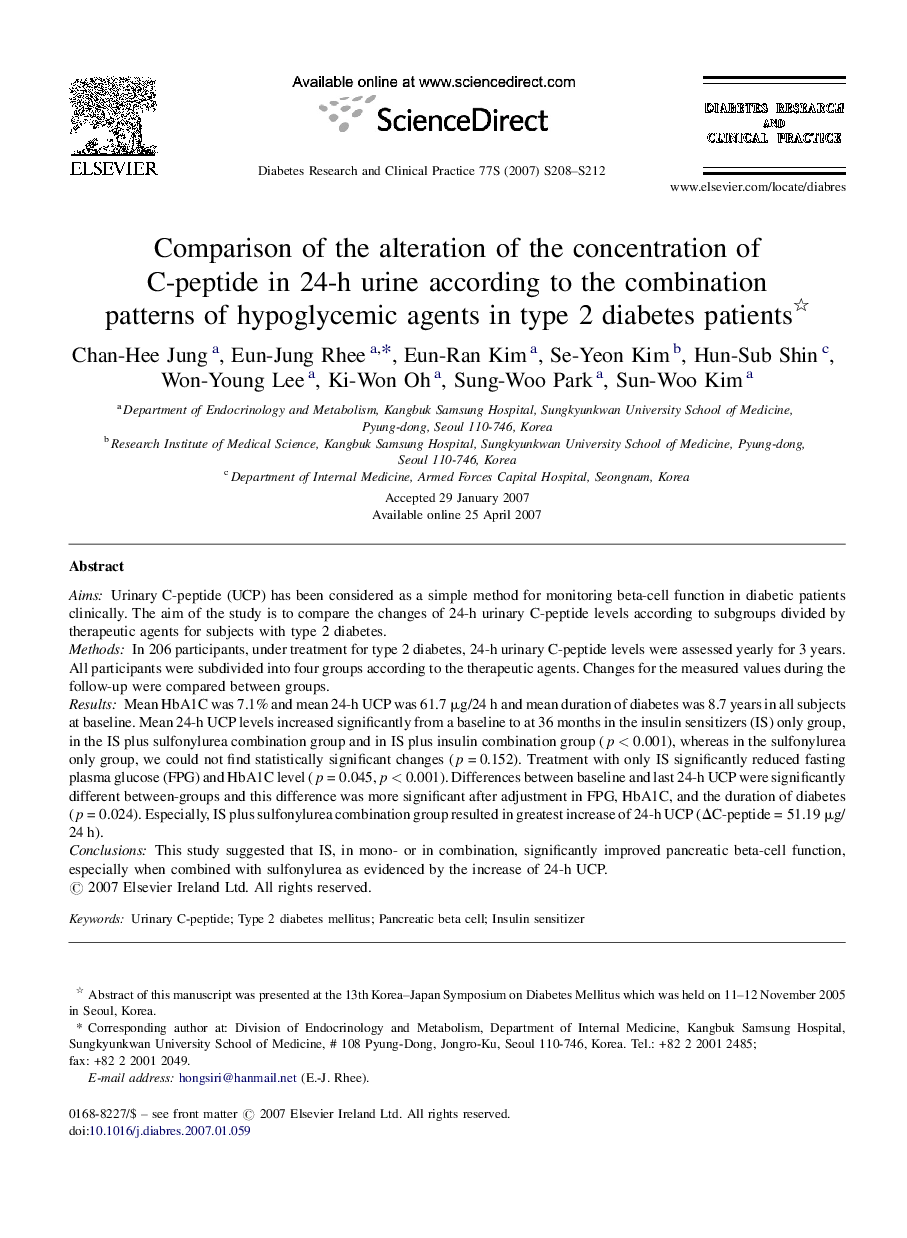| Article ID | Journal | Published Year | Pages | File Type |
|---|---|---|---|---|
| 2798658 | Diabetes Research and Clinical Practice | 2007 | 5 Pages |
AimsUrinary C-peptide (UCP) has been considered as a simple method for monitoring beta-cell function in diabetic patients clinically. The aim of the study is to compare the changes of 24-h urinary C-peptide levels according to subgroups divided by therapeutic agents for subjects with type 2 diabetes.MethodsIn 206 participants, under treatment for type 2 diabetes, 24-h urinary C-peptide levels were assessed yearly for 3 years. All participants were subdivided into four groups according to the therapeutic agents. Changes for the measured values during the follow-up were compared between groups.ResultsMean HbA1C was 7.1% and mean 24-h UCP was 61.7 μg/24 h and mean duration of diabetes was 8.7 years in all subjects at baseline. Mean 24-h UCP levels increased significantly from a baseline to at 36 months in the insulin sensitizers (IS) only group, in the IS plus sulfonylurea combination group and in IS plus insulin combination group (p < 0.001), whereas in the sulfonylurea only group, we could not find statistically significant changes (p = 0.152). Treatment with only IS significantly reduced fasting plasma glucose (FPG) and HbA1C level (p = 0.045, p < 0.001). Differences between baseline and last 24-h UCP were significantly different between-groups and this difference was more significant after adjustment in FPG, HbA1C, and the duration of diabetes (p = 0.024). Especially, IS plus sulfonylurea combination group resulted in greatest increase of 24-h UCP (ΔC-peptide = 51.19 μg/24 h).ConclusionsThis study suggested that IS, in mono- or in combination, significantly improved pancreatic beta-cell function, especially when combined with sulfonylurea as evidenced by the increase of 24-h UCP.
